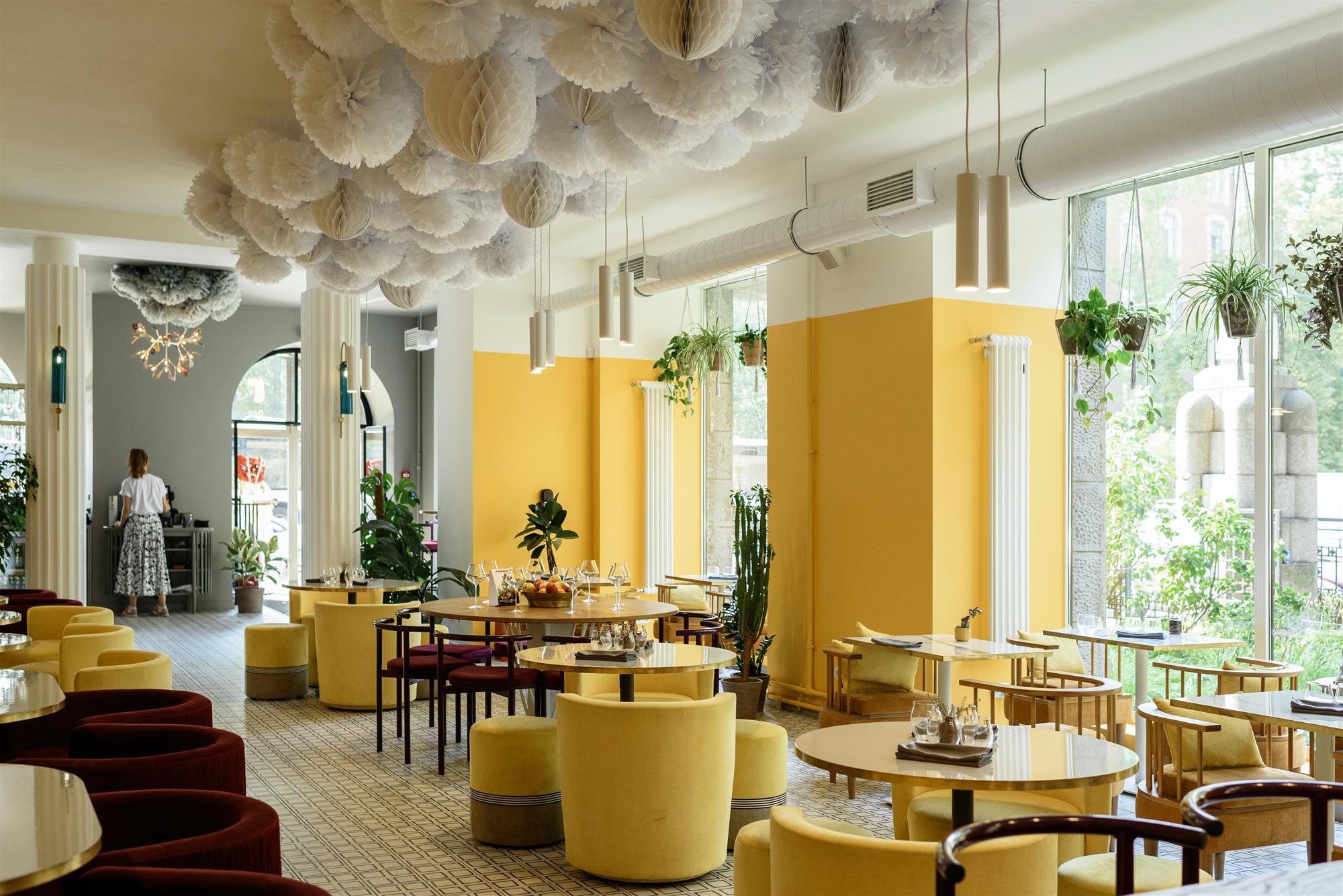 The Indian restaurant industry has been on a roller coaster ride, with several lows and few highs since the onset of the pandemic. The strict lockdown regimes of the first and second pandemic waves in the country have had a severe and long-lasting impact on the dine-out culture, with industry associations estimating that 25-30% of the outlets have shut down in the last year. However, with the easing of restrictions in the last couple of months, the restaurant industry is gradually getting back on its feet, though subdued customer sentiment on in-restaurant dining is still a major roadblock.
The Indian restaurant industry has been on a roller coaster ride, with several lows and few highs since the onset of the pandemic. The strict lockdown regimes of the first and second pandemic waves in the country have had a severe and long-lasting impact on the dine-out culture, with industry associations estimating that 25-30% of the outlets have shut down in the last year. However, with the easing of restrictions in the last couple of months, the restaurant industry is gradually getting back on its feet, though subdued customer sentiment on in-restaurant dining is still a major roadblock.After the initial shock of zero demand and footfalls during the first lockdown, the industry quickly pressed the reset button and reinvented itself, having learned the hard way that the only route to survival is to quickly adapt to changing times. From following stringent cleanliness protocols, reducing costs, embracing technology, to introducing new business models focused on delivery & takeaway, the industry has adopted several strategies to survive the pandemic.
The most prominent change is, of course, the renewed and stringent attention to the health, hygiene, and safety of the customers as well as the employees. The industry has upped its safety & hygiene game by using protective gear for employees, providing UV sterilized cutlery, installing plexiglass barriers to abide by social distancing norms, and even adopting nano-disinfection treatments for all surfaces to make people feel safe to come and dine-in at their premises.

Amid the pandemic, technology has proven to be an invaluable resource for the F&B industry. Digital or QR code scanned menus, online food ordering, online payments, and booking, and delivery apps have kept the restaurant businesses afloat during the last year. With food delivery services taking the lead, the concept of cloud kitchens – restaurants dealing exclusively with online delivery – also gained prominence and will remain valuable even after the pandemic subsides. These digital tools and novel business models are the norm in the industry today, rather than an exception, due to the gratifying experience they provide to the customer in a post-pandemic world.
Apart from digital technology, automation is also gaining traction. An example is the Cloves restaurant in Gujarat, which came up with an innovative techno-dining experience, with food being delivered in covered bowls via a conveyer belt straight from the kitchen, avoiding any human contact. Furthermore, several restaurateurs have introduced al-fresco and outdoor dining options to attract customers. Drive-in and drive-through restaurants, helping customers place orders beforehand with pickup from the comfort of their vehicle, have also made a mark in the last year.
The recent media articles on the strong recovery being witnessed in in-restaurant dining globally, with countries such as the UAE recording a huge rise in dine-in guests with ease in restrictions, is a glimmer of hope for the Indian fraternity as well. The increasing momentum of the vaccination drive in the country and getting restaurant employees vaccinated on priority will help alleviate customer hesitancy, which, combined with people’s growing need to go back to normal, will aid in a quicker revival of the industry.
Additional Contributor to this article: Kavya Jain, Intern at HVS ANAROCK
About Mandeep S Lamba
Mandeep S. Lamba, President – South Asia, oversees the HVS global hospitality practice for South Asia. He has spent over 30 years in the hospitality industry of which the last 19 have been in CEO positions. Having worked with leading International and domestic Hotel Companies such as IHG, Radisson & ITC Hotels, he also set up joint venture companies with Dawnay Day Group UK and Onyx Hospitality, Thailand to own and operate hotels in India giving him a broader exposure to the hospitality business.
An established industry leader, Mandeep has won several awards and recognitions in India and abroad for his accomplishments and contribution to the hospitality industry. He is a Certified Hospitality Administrator from the American Hotels Association (CHA), a member of the Royal Institute of Chartered Surveyors, UK (MRICS) and a member of the Tourism Council of CII (Northern India). His views are often solicited for television and print media as a spokesperson for the hospitality & tourism sector.
Prior to joining HVS in 2018, Mandeep was the Managing Director, Hotels & Hospitality Group for JLL.
Contact Mandeep at +91 981 1306 161 or [email protected]
An established industry leader, Mandeep has won several awards and recognitions in India and abroad for his accomplishments and contribution to the hospitality industry. He is a Certified Hospitality Administrator from the American Hotels Association (CHA), a member of the Royal Institute of Chartered Surveyors, UK (MRICS) and a member of the Tourism Council of CII (Northern India). His views are often solicited for television and print media as a spokesperson for the hospitality & tourism sector.
Prior to joining HVS in 2018, Mandeep was the Managing Director, Hotels & Hospitality Group for JLL.
Contact Mandeep at +91 981 1306 161 or [email protected]
About Dipti Mohan
Dipti Mohan, Associate Vice President - Research with HVS South Asia, is a seasoned knowledge professional with extensive experience in research-based content creation. She has authored several ‘point of view’ documents such as thought leadership reports, expert opinion articles, white papers, and research reports across industries including hospitality, real estate, infrastructure, cement, and construction. Contact Dipti at [email protected]


0 Comments
Success
It will be displayed once approved by an administrator.
Thank you.
Error